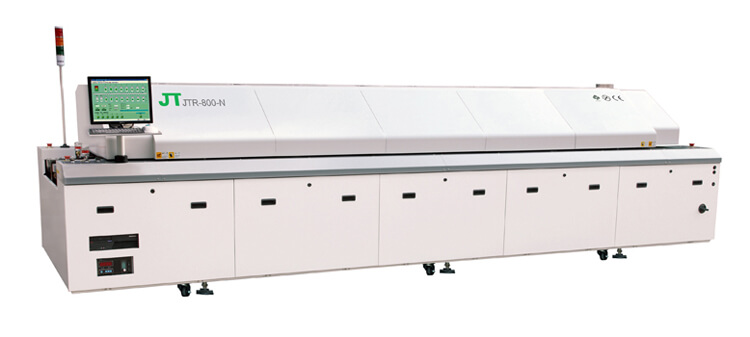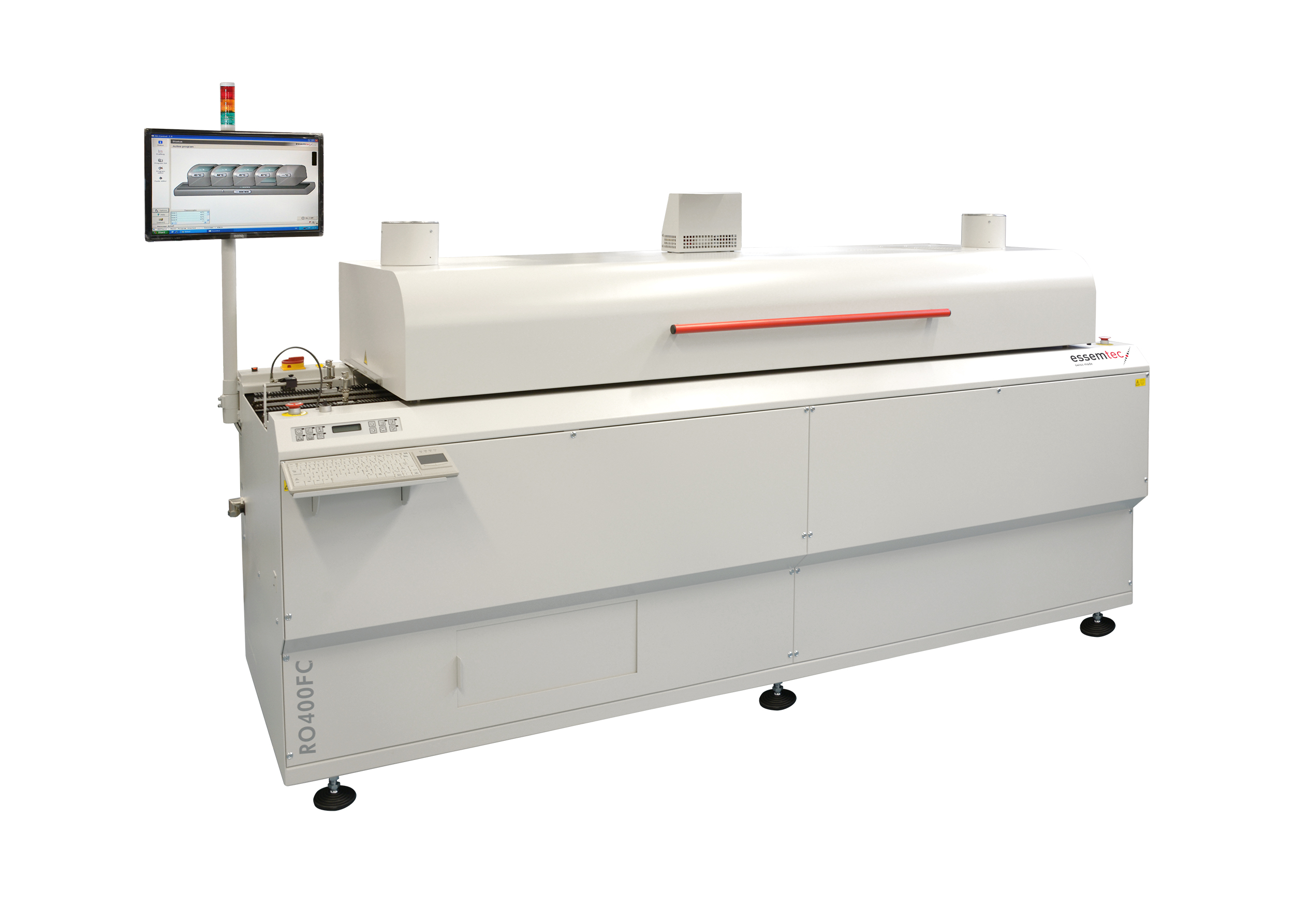

In the end, toaster ovens work, but they are too dependant on external control or attempting to view inside the little window waiting for something to happen. The toaster can actually hit 250C without any problems.

The massive drop at 5min is when the front door was opened. The commercial reflow ovens are 1-1.5C/s. Starting from 25C, the ramp is 225C in 5min or 45C/min = 0.75C/s. Here we have the initial test of the Spark Fun Oster Toaster. Since our toaster oven has elements on both top and bottom (the top elements heats up much faster), a toaster oven would have the same Achilles heal, melting the softer components on the top side of the PCB. The main culprit in our case was the over-head heating elements in our industrial reflow oven. In other words, you have to destroy the plastic connectors or have larger connectors pop off in your hand. Time and time again, either the USB connector would fail to reflow because of the metal housing reflecting the heat, or we would bake the board so long that the USB would reflow but the plastic Camera connector would be completely hosed. This was a major problem on the GM862 EVK v2 boards. I've even built up a controller board to try to mimic the real reflow oven profiles.īen and I have found that many plastic connectors have low melting points while other connectors (SMD USB connectors with metal housings) have very high reflow points. The Seattle Robotics Society's report on Toaster Oven Reflowing covers the process nicely. A $50-$100 toaster oven from your local Wally World can do quite nicely. Using a toaster oven has been shown to work in many cases.

New users to soldering SMD devices are always intimidated by soldering itty-bitty leads. $100 is pretty standard for an iron although $50-$2000 is possible. You will need a decent iron, but nothing else. Hand soldering is cheap (no extra equipment needed). There are five ways to solder SMD parts that I can think of: Well, just take everything we say with a grain of salt. Don't try any of this at home - wait, you are at home. Here is a tutorial that will break down the different approaches to SMD reflow soldering, what we've learned, and what to steer clear of.Īs always, this stuff can kill you, burn your house down, or make your basement smell pretty foul. If you're reading this, you're like us - strapped for cash and in need of a good way to reflow PCBs. I'm here to tell you, it was all a waste of money.ĭon't get me wrong, there is the correct way to manufacture 10,000 units of a caller-ID controller board, and then there is the Spark Fun way. Luckily, as business has increased, revenue has allowed us to purchase a few bottom-dollar machines to help with manufacturing. Spark Fun has barely had the capitol to invest in a hot-air rework station, let alone pick and place machines and industrial reflow ovens. I've been reflowing SMD parts on PCBs for around a year now.


 0 kommentar(er)
0 kommentar(er)
